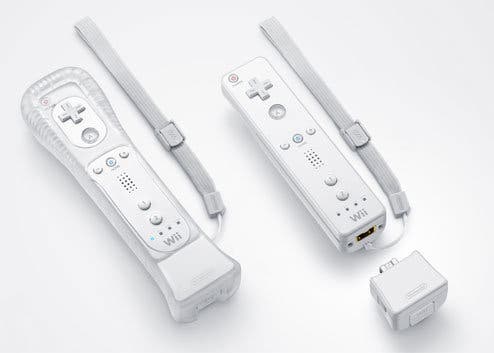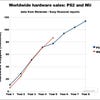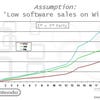Where Wii's At
Taking stock of the Revolution.
When the Wii was first shown at E3 2005, still known by its codename 'Revolution', Nintendo decided to hold back the controller. The most exciting snippet of information offered by Nintendo's poker-faced president Satoru Iwata was that if you had three DVD boxes held together, Revolution was slightly longer and deeper in size.
By December 2006 the Wii had launched in all major territories, one year later than the Xbox 360 and at the same time as PlayStation 3. No HD, an offbeat online interface built around 'channels', and a single magical gimmick with the perfect launch title to showcase it. What happened next seems inevitable with hindsight: Wii dominated the competition, and did it while making a profit on hardware.
This isn't the place to tease apart the reasons why but, in perhaps the phrase of our times, the market had spoken. Since launch the Wii has not only outsold the current generation of Microsoft and Sony hardware, but it's done it by a distance. The Wii hardware currently sits at just over 86 million units sold, compared to 53 million for the Xbox 360 and 50 million for PS3. Perhaps it's impolitic to say so, but after the N64 and GC days it was thrilling to watch Nintendo come back on their own terms, and so assuredly wrong-foot their lumbering opposition.
This November will mark five years since the Wii's launch, the usual gap of time between new Nintendo hardware, and its successor is confirmed to be shown at E3 this year: our favourite rumour thus far is the one where it has an in-built LED projector. Whatever, the Wii's winding down and Nintendo's net profits for the last fiscal year dropped 66.1%, a decline explained thus: "The decrease in unit sales was mainly due to a lack of appealing software titles which encourage consumers to buy."

We'll come back to that. The immediate response from Nintendo is a global price cut for the Wii, and a line of budget software – in the UK it's now £129 for the console with a choice of game, while in the US it's $149. Reggie Fils-Aime reckons this puts the console at a crucial level of affordability, citing the PS2's ongoing indian summer as Nintendo's target. "For us this is a very important move," he says. "And in the last home console cycle, the leading system at the time sold almost 50 per cent of its volume at a price point of $149 or below."
A price cut should sort those declining sales out, right? Wedbush Morgan analyst Michael Pachter, who's been calling for a Wii price cut for some time, hedges his bets: "I think that price cuts will stabilize hardware sales for the Wii, and perhaps drive them 20 – 25% higher [but] given that the price cut happened barely 6 weeks into Nintendo's fiscal year, it's safe to say that they expect sales to flatten out or to decline slightly."
It's that PS2 comparison that's interesting, though. "The Wii should enjoy the same success that the PS2 enjoyed from 2004 – 2009," says Pachter, "fairly robust sales and decent software sales, but declining each year."
Sony announced on January 31 2011 that long into its tenth year the PS2 has sold over 150 million hardware units on January 31 2011, and a mind-boggling 1.52 billion games. That works out at an average of just over ten titles sold per hardware unit. The Wii's sales stand at 86 million for hardware and 695 million for software.




